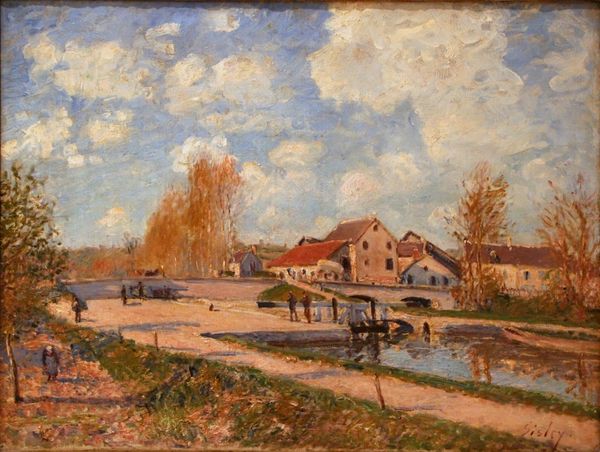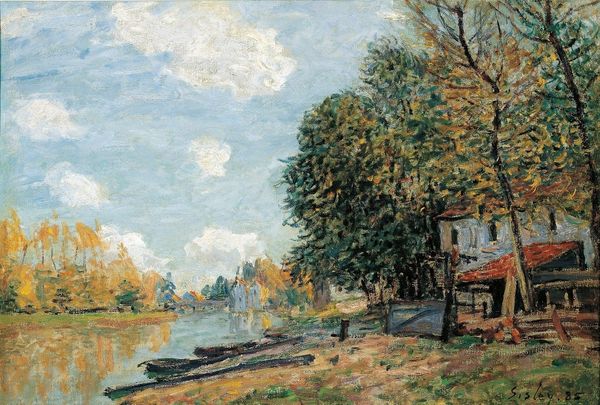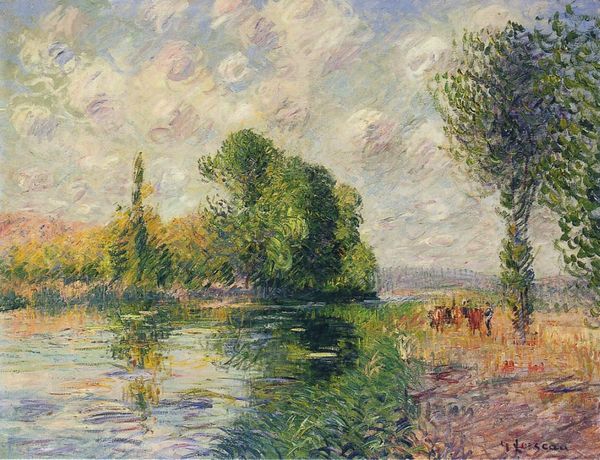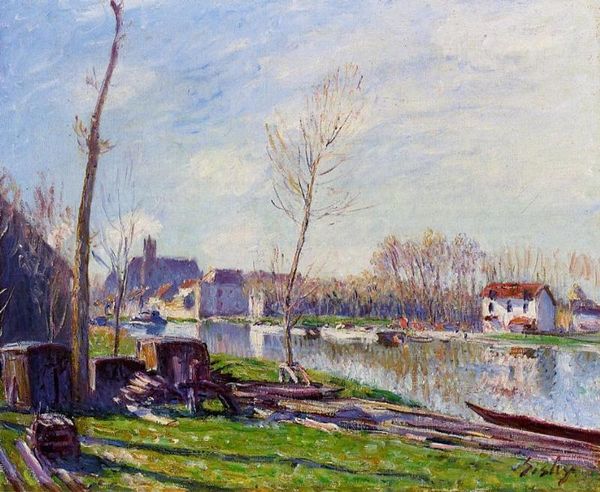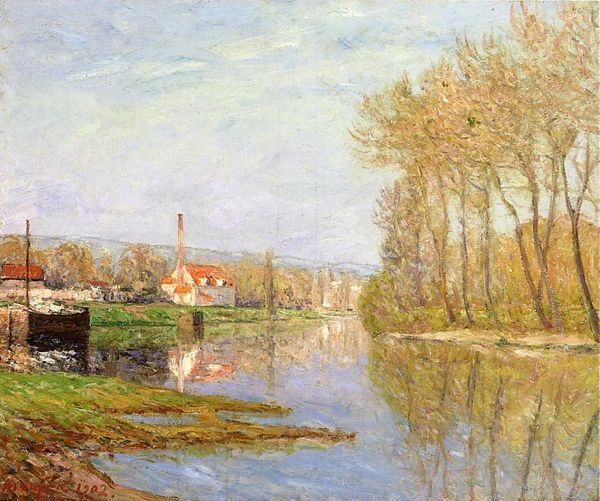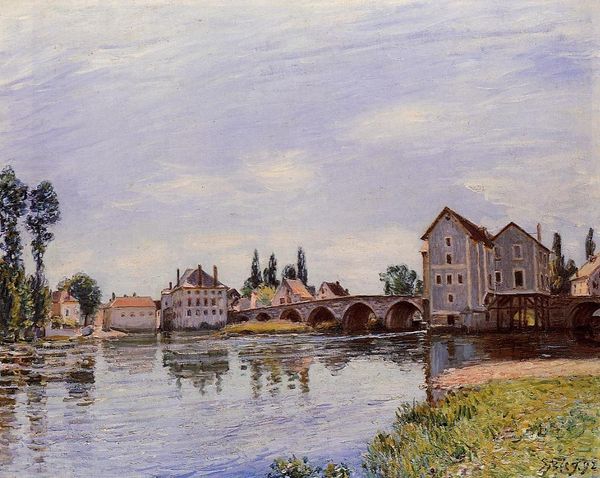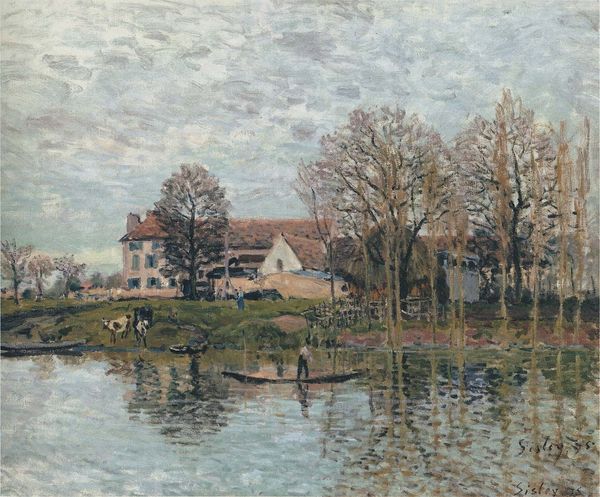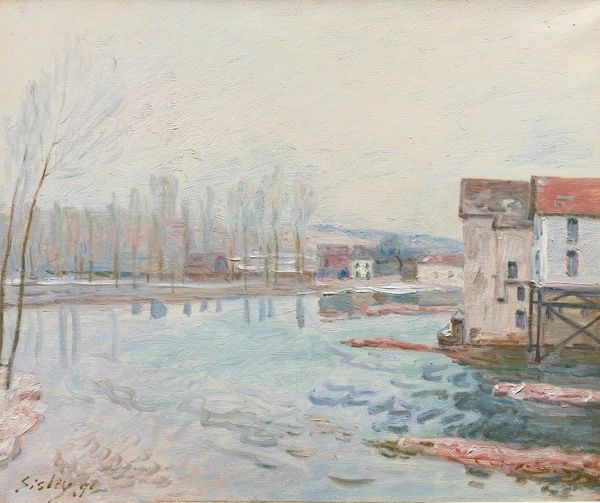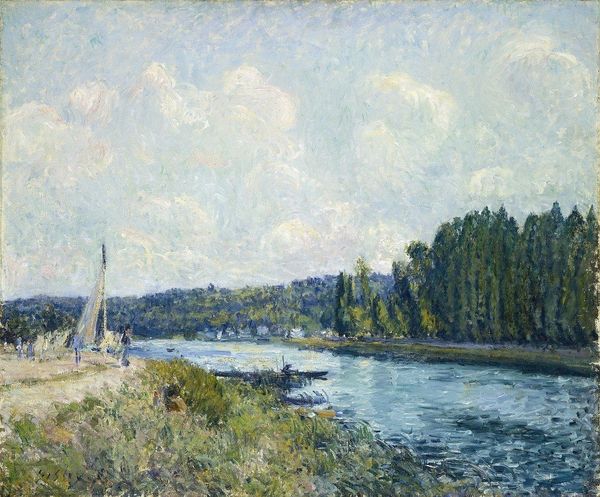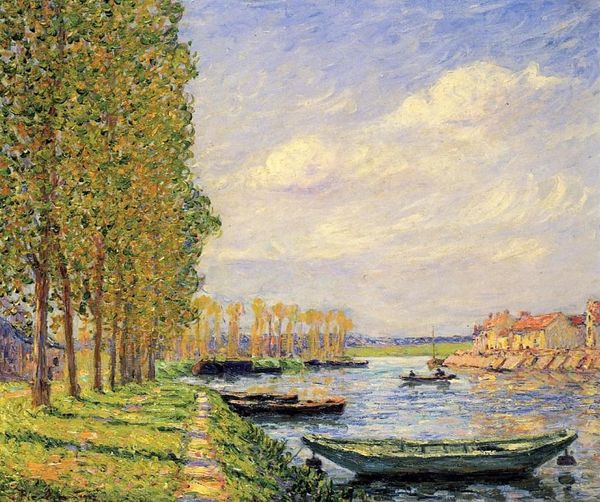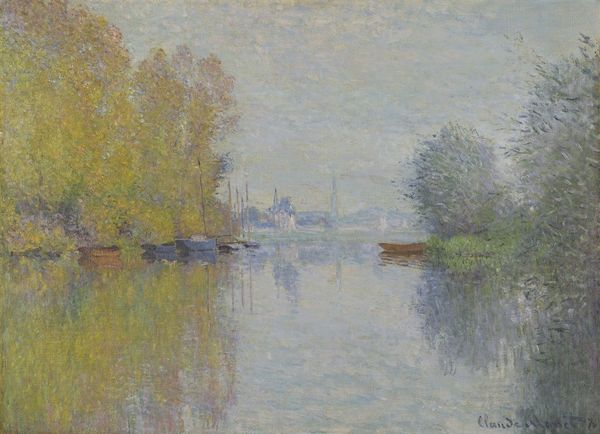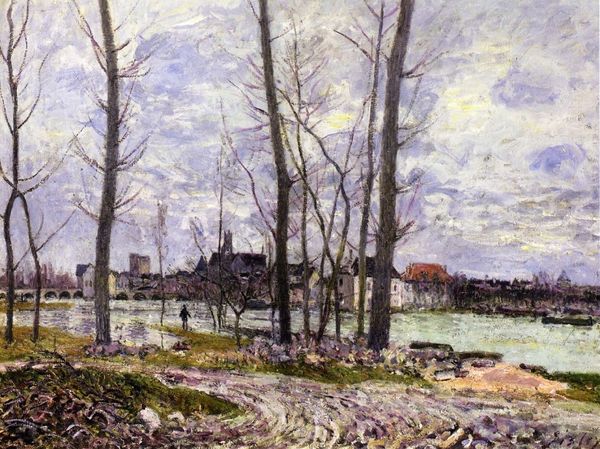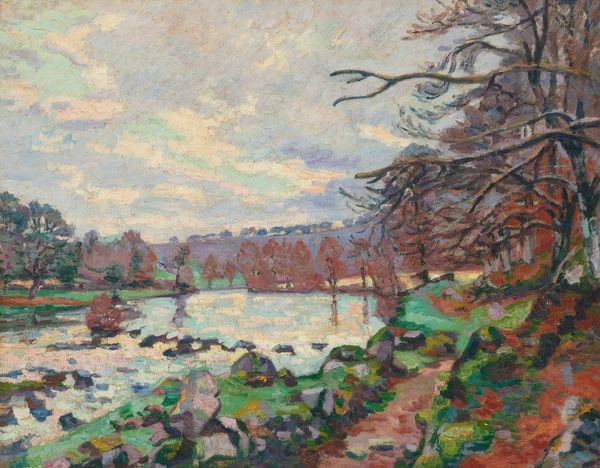
#
tree
#
abstract painting
#
impressionist painting style
#
landscape
#
waterfall
#
river
#
impressionist landscape
#
possibly oil pastel
#
oil painting
#
fluid art
#
acrylic on canvas
#
forest
#
natural-landscape
#
water
#
painting painterly
#
watercolour illustration
#
watercolor
Copyright: Public domain
Editor: This is Alfred Sisley's "Grand Jatte", painted in 1873. It looks like an oil painting of a river landscape. It strikes me as quite serene, even with the bare trees. What captures your attention in this piece? Curator: I'm drawn to how Sisley uses materials to represent the shifting social landscape. Look at the brushstrokes, how they mimic the movement of water, reflecting not just light, but the ebb and flow of capital along the Seine. Consider the pigment itself – what was its source? How accessible was it? Editor: So, you're thinking about the economic factors that influenced the making of the painting, even down to the sourcing of the pigments? Curator: Precisely. Impressionism, seemingly focused on capturing fleeting moments, was also a product of its time – an era of industrial expansion and burgeoning consumerism. The mass production of paint tubes, for example, democratized art-making, yet also potentially altered artistic intention with the standardization of materials. The choice of a landscape as a subject… was it an escape or a comment on urbanization? Editor: That's a perspective I hadn't considered. I always thought of Impressionism as focused on the visual experience. Curator: It is that, but visual experience is also constructed through material conditions and cultural context. The level of “finish” itself challenges the academic standards; what implications does this hold regarding the art market's embrace of work that showcases, rather than conceals, its making? Think about the labor involved, not just Sisley's, but the labor that went into the very production of the materials. Editor: I see, understanding the "Grand Jatte" also involves unpacking the industry behind its creation and the social values of the time. That adds so much more to the painting's significance. Curator: Absolutely. By examining the material processes, we move beyond surface aesthetics and toward a deeper engagement with the social and economic forces at play in art history.
Comments
No comments
Be the first to comment and join the conversation on the ultimate creative platform.
